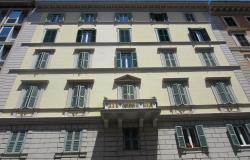A probe has been opened into the acquisition by the Italian State of a wooden carving of Christ on the cross attributed to Michelangelo.
The Audit Court of Lazio, the region around Rome, said it wanted to be sure the crucified Christ was the real thing.
News of the probe, splashed across the front page of Italian daily La Repubblica Friday, comes in the wake of skepticism voiced by Michelangelo experts in the international press.
In a recent article in the Daily Telegraph, Naples University art history professor Tomaso Montanari said he was ''sure'' the work was a fake.
''There are at least another dozen or so crosses out there made in a similar fashion and this was a style common to the studios of Florence at the end of the 1400s,'' he told the British daily.
''What is amazing is that the Italian government did not ask for a third-party opinion on the work before buying it and proclaiming it as a Michelangelo, which it is clearly not,'' Montanari said.
The attribution was first made in 2004 by Florence, Siena and Perugia university experts who examined the piece for years before concluding that the level of anatomical accuracy was only matched by other Michelangelos.
The 'cross', which is in fact a crucified body without the supporting crucifix, was then vetted by a slew of committees before being bought last December.
Skeptics have stressed the lack of documentation on the piece as well as its low price, 3.25 million euros.
The Italian culture ministry reacted to the La Repubblica report with ''shock'', stressing that the attribution had been supported by art world heavyweights like Florence Museums Director Cristina Acidini, Florence University art historian Giancarlo Gentilini and Vatican Museums Director Antonio Paolucci.
Acidini, the author of an authoritative monograph on Michelangelo, has said that while ''clinching'' artistic evidence is lacking, the way the head reclines is ''typical'' of several marble pieces by Michelangelo.
Studies of the cross found that the 20-year-old Michelangelo ''probably changed his mind halfway through the sculpture,'' she argued.
Initially, the Christ's head was too bowed for the slant of the body so it was lopped off and reattached with a wedge of wood at an accurate angle.
Acidini said this was indicative of ''a full-blown artistic rethink'' typical of Michelangelo.
While Michelangelo is traditionally known for the daunting scale of his pieces, Gentilini said it was ''highly feasible'' he would have created such a small, detailed sculpture during this period.
''The young Michelangelo had close ties to the circle of (Florentine monk Girolamo) Savonarola, which was responsible for the spread of these small crucifixes,'' the professor noted.
''There would have been plenty of opportunities to carve such images and it's very likely that one of his principal customers, the Dominican monks in Bologna or Lorenzo di Pierfrancesco de Medici, would have requested one''.
Paolucci, for his part, acknowledged that ''there is no documentary certainty but stylistic comparisons make one think an attribution to Michelangelo has very reasonable grounds''.
CROSS APPEARED IN 2004.
The limewood carving made its first-ever public appearance in Florence in 2004, shortly after its new attribution.
It was displayed for four months at the Horne Museum before returning to its owner, a Turin art dealer.
Earlier that year experts attributed it to Michelangelo, who lived from 1475 to 1564.
It was tentatively dated to 1495, when the artist was 20.
The cross was bought last December and has since toured Italy, drawing big crowds in Rome, Palermo and Naples.
It is expected to find a permanent home in Florence's Bargello museum, despite murmurings in the Florentine art world highlighted by La Repubblica.
The left-leaning daily quoted Michelangelo expert Paola Barocchi as saying the cross was a ''serial'' work.
Art historian Mina Gregori, who advised a big Florence bank not to buy the work, told La Repubblica the Italian State should try to get its money back.
The director of Florence's Kunsthistorisches Institut, Alessandro Nova, told the newspaper he had been ''amazed'' at the purchase.
In its defence of the buy, the culture ministry said Culture Minister Sandro Bondi approved the purchase after the State Audit Court had given the thumbs up and registered the contract.
As well as ''the opinions and expertise of major experts,'' the ministry said, the court's move was seen as a ''preventive judgement of legitimacy,'' the ministry stressed.
Bondi accused La Repubblica of fuelling a ''petty-minded'' debate as part of a campaign against the government.







